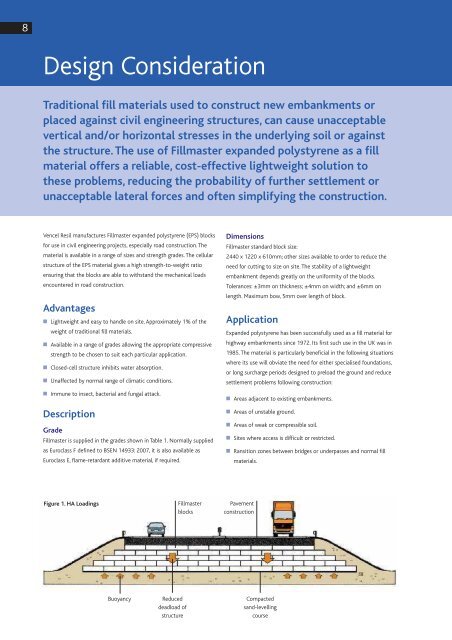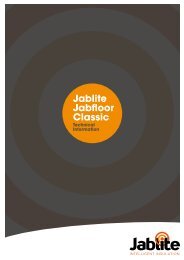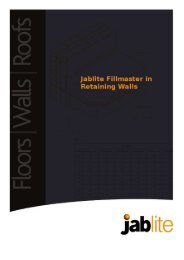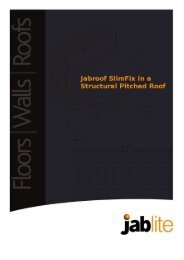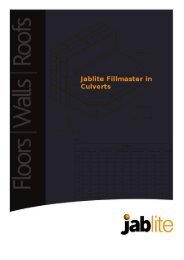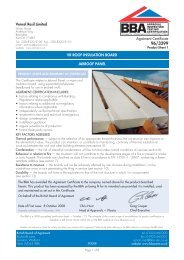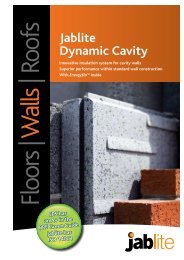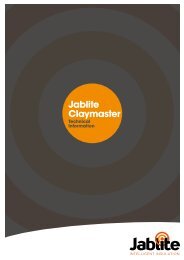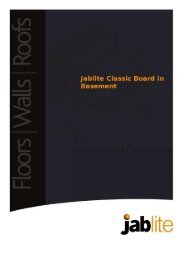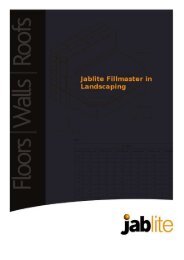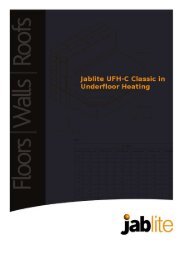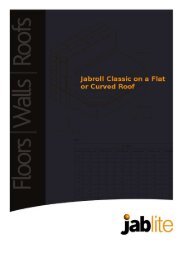Jablite Fillmaster in Noise Bunds
Jablite Fillmaster in Noise Bunds
Jablite Fillmaster in Noise Bunds
Create successful ePaper yourself
Turn your PDF publications into a flip-book with our unique Google optimized e-Paper software.
8<br />
Design Consideration<br />
Traditional fill materials used to construct new embankments or<br />
placed aga<strong>in</strong>st civil eng<strong>in</strong>eer<strong>in</strong>g structures, can cause unacceptable<br />
vertical and/or horizontal stresses <strong>in</strong> the underly<strong>in</strong>g soil or aga<strong>in</strong>st<br />
the structure. The use of <strong>Fillmaster</strong> expanded polystyrene as a fill<br />
material offers a reliable, cost-effective lightweight solution to<br />
these problems, reduc<strong>in</strong>g the probability of further settlement or<br />
unacceptable lateral forces and often simplify<strong>in</strong>g the construction.<br />
Vencel Resil manufactures <strong>Fillmaster</strong> expanded polystyrene (EPS) blocks<br />
for use <strong>in</strong> civil eng<strong>in</strong>eer<strong>in</strong>g projects, especially road construction. The<br />
material is available <strong>in</strong> a range of sizes and strength grades. The cellular<br />
structure of the EPS material gives a high strength-to-weight ratio<br />
ensur<strong>in</strong>g that the blocks are able to withstand the mechanical loads<br />
encountered <strong>in</strong> road construction.<br />
Advantages<br />
■ Lightweight and easy to handle on site. Approximately 1% of the<br />
weight of traditional fill materials.<br />
■ Available <strong>in</strong> a range of grades allow<strong>in</strong>g the appropriate compressive<br />
strength to be chosen to suit each particular application.<br />
■ Closed-cell structure <strong>in</strong>hibits water absorption.<br />
■ Unaffected by normal range of climatic conditions.<br />
■ Immune to <strong>in</strong>sect, bacterial and fungal attack.<br />
Descri ption<br />
Grade<br />
<strong>Fillmaster</strong> is supplied <strong>in</strong> the grades shown <strong>in</strong> Table 1. Normally supplied<br />
as Euroclass F def<strong>in</strong>ed to BSEN 14933: 2007, it is also available as<br />
Euroclass E, flame-retardant additive material, if required.<br />
Dimensions<br />
<strong>Fillmaster</strong> standard block size:<br />
2440 x 1220 x 610mm; other sizes available to order to reduce the<br />
need for cutt<strong>in</strong>g to size on site. The stability of a lightweight<br />
embankment depends greatly on the uniformity of the blocks.<br />
Tolerances: ±3mm on thickness; ±4mm on width; and ±6mm on<br />
length. Maximum bow, 5mm over length of block.<br />
Application<br />
Expanded polystyrene has been successfully used as a fill material for<br />
highway embankments s<strong>in</strong>ce 1972. Its first such use <strong>in</strong> the UK was <strong>in</strong><br />
1985. The material is particularly beneficial <strong>in</strong> the follow<strong>in</strong>g situations<br />
where its use will obviate the need for either specialised foundations,<br />
or long surcharge periods designed to preload the ground and reduce<br />
settlement problems follow<strong>in</strong>g construction:<br />
■ Areas adjacent to exist<strong>in</strong>g embankments.<br />
■ Areas of unstable ground.<br />
■ Areas of weak or compressible soil.<br />
■ Sites where access is difficult or restricted.<br />
■ Ransition zones between bridges or underpasses and normal fill<br />
materials.<br />
Figure 1. HA Load<strong>in</strong>gs<br />
<strong>Fillmaster</strong><br />
blocks<br />
Pavement<br />
construction<br />
Buoyancy<br />
Reduced<br />
deadload of<br />
structure<br />
Compacted<br />
sand-levell<strong>in</strong>g<br />
course


